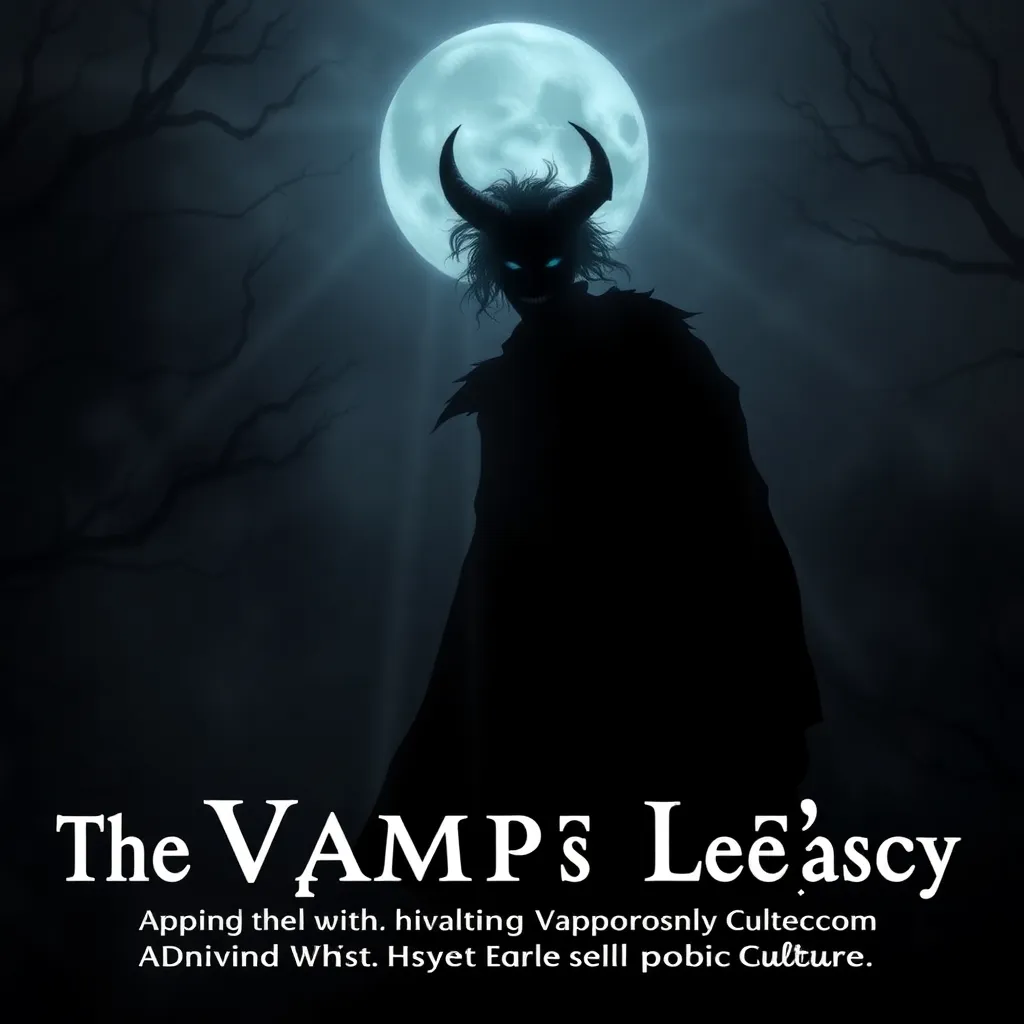Bigfoot Hunting: The History of Tracking and Searching for the Elusive Creature
I. Introduction
Bigfoot, also known as Sasquatch, has captured the imagination of people around the world. This mythical creature, described as a large, hairy, ape-like being, has become a cultural phenomenon, spawning countless stories, documentaries, and expeditions. The fascination with Bigfoot hunting stems from a combination of intrigue, adventure, and the possibility of discovering something extraordinary in the wilderness.
The purpose of this article is to explore the history of Bigfoot tracking and searching, examining the origins of its mythology, the early days of hunting, advancements in technology, notable expeditions, and the cultural impact of this elusive creature.
II. Origins of Bigfoot Mythology
The mythology surrounding Bigfoot has deep roots in indigenous legends and folklore. Many Native American tribes have tales of large, hairy beings living in the forests, often regarded as guardians of the wilderness. These stories have been passed down through generations, shaping the early perception of what we now call Bigfoot.
In the 19th century, the first documented sightings of a creature resembling Bigfoot emerged in North America. Reports of large footprints and encounters with a mysterious beast began to surface, igniting the public’s curiosity. As these accounts spread, the idea of Bigfoot evolved into a widely recognized phenomenon.
The influence of media on Bigfoot mythology cannot be overlooked. In the mid-20th century, newspapers and magazines began publishing stories and photographs claiming to capture evidence of Bigfoot’s existence. This media frenzy contributed to the growing interest in hunting and studying the creature.
III. The Early Days of Bigfoot Hunting
The mid-20th century marked a significant rise in interest in cryptozoology, the study of animals whose existence is not substantiated by mainstream science. Pioneers in Bigfoot research, such as John Green and Roger Patterson, played crucial roles in popularizing the search for this enigmatic creature.
- John Green: A Canadian journalist whose book, “Sasquatch: The Apes Among Us,” provided a comprehensive overview of Bigfoot sightings and evidence.
- Roger Patterson: Famous for the Patterson-Gimlin film, which purportedly captured Bigfoot in the wild, this footage remains one of the most debated pieces of evidence in the Bigfoot community.
Significant sightings during this period, such as the 1967 Patterson-Gimlin film, had a profound impact on the hunting community, inspiring countless individuals to embark on their own expeditions in search of the elusive creature.
IV. Technological Advancements in Bigfoot Tracking
With the advancement of technology, the methods used in Bigfoot tracking have evolved significantly. Early hunters relied on basic tools, but modern researchers utilize a variety of innovative technologies to document and investigate potential sightings.
- Photography and Film: High-resolution cameras and video equipment have become essential in documenting evidence. Photographs of alleged Bigfoot tracks and sightings are shared widely online.
- Audio Recordings: The use of sound analysis has gained popularity, with researchers capturing sounds in the wilderness that they believe may be linked to Bigfoot.
- Modern Tools: Drones and thermal imaging cameras allow for extensive aerial surveys of remote areas, while tracking software helps researchers analyze data collected during expeditions.
V. Notable Expeditions and Research Projects
Throughout the years, there have been numerous notable expeditions dedicated to the search for Bigfoot. Some of these expeditions have become legendary within the community.
- The Olympic Project: A research initiative focused on the Olympic Peninsula in Washington, known for its dense forests and high number of Bigfoot sightings.
- Finding Bigfoot: A popular television show that brought significant attention to Bigfoot hunting, featuring a team of investigators who traveled across the United States to explore claims of sightings.
Academic studies have also sought to investigate the phenomenon. These studies often analyze reports and evidence from a scientific perspective, yet the findings remain inconclusive, leading to ongoing debates about the existence of Bigfoot.
Documentaries and television shows have played a crucial role in sustaining public interest. They bring stories and alleged evidence to a broader audience, inspiring both believers and skeptics alike.
VI. The Skepticism and Controversies Surrounding Bigfoot
Despite the enthusiasm surrounding Bigfoot hunting, there is a significant amount of skepticism within the scientific community. Many scientists argue that the lack of concrete evidence, such as a specimen or verified remains, undermines the credibility of the claims made by enthusiasts.
- Famous Hoaxes: Instances like the 2008 Bigfoot body hoax have contributed to the divide between believers and skeptics. These hoaxes often tarnish the reputation of legitimate researchers and fuel skepticism.
- Believers vs. Skeptics: The Bigfoot community is often divided, with passionate believers holding steadfast to their convictions while skeptics demand empirical evidence and rigorous scientific validation.
VII. The Cultural Impact of Bigfoot Hunting
Bigfoot’s presence in popular culture has been significant, influencing movies, books, and merchandise. The creature has been portrayed in various forms, from horror films to comedic representations, solidifying its status as an American folklore icon.
- Movies and Books: Titles like “Harry and the Hendersons” and numerous documentaries have contributed to the cultural narrative surrounding Bigfoot.
- Social Media and Online Communities: Platforms like Facebook and Reddit host numerous groups where enthusiasts share stories, evidence, and organize expeditions, creating a vibrant online community.
The ongoing legacy of Bigfoot as an American folklore icon reflects the enduring fascination with the unknown and the desire for adventure in the wilderness.
VIII. Conclusion
In summary, the history of Bigfoot hunting and tracking reveals a rich tapestry of folklore, scientific inquiry, and cultural impact. From its indigenous roots to modern-day expeditions, the search for Bigfoot continues to captivate individuals worldwide.
The allure of the unknown, the thrill of exploration, and the possibility of encountering something extraordinary keep the spirit of Bigfoot hunting alive. As technology advances and new evidence emerges, the future of Bigfoot exploration may hold even more surprises for enthusiasts and skeptics alike.
![]()



